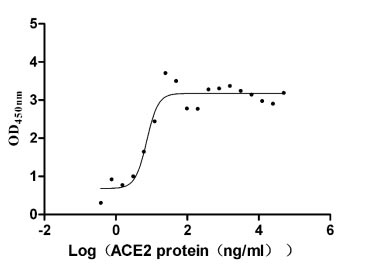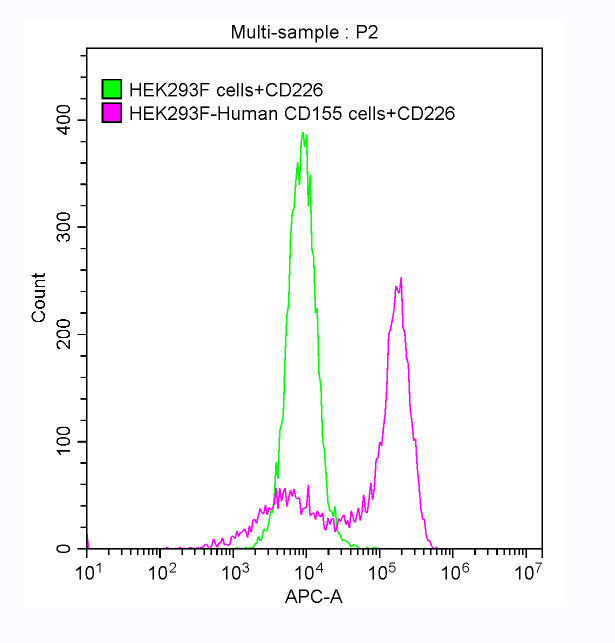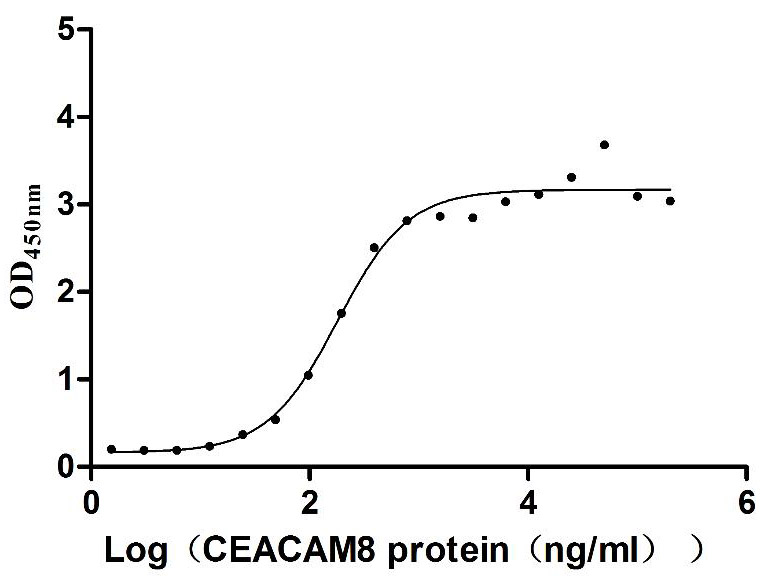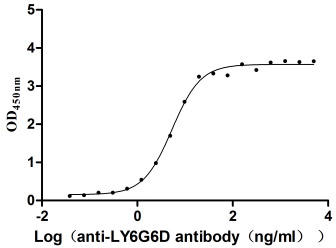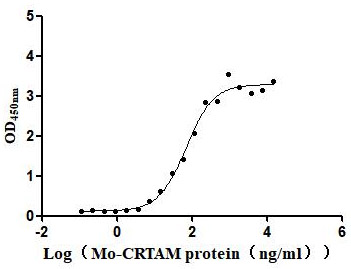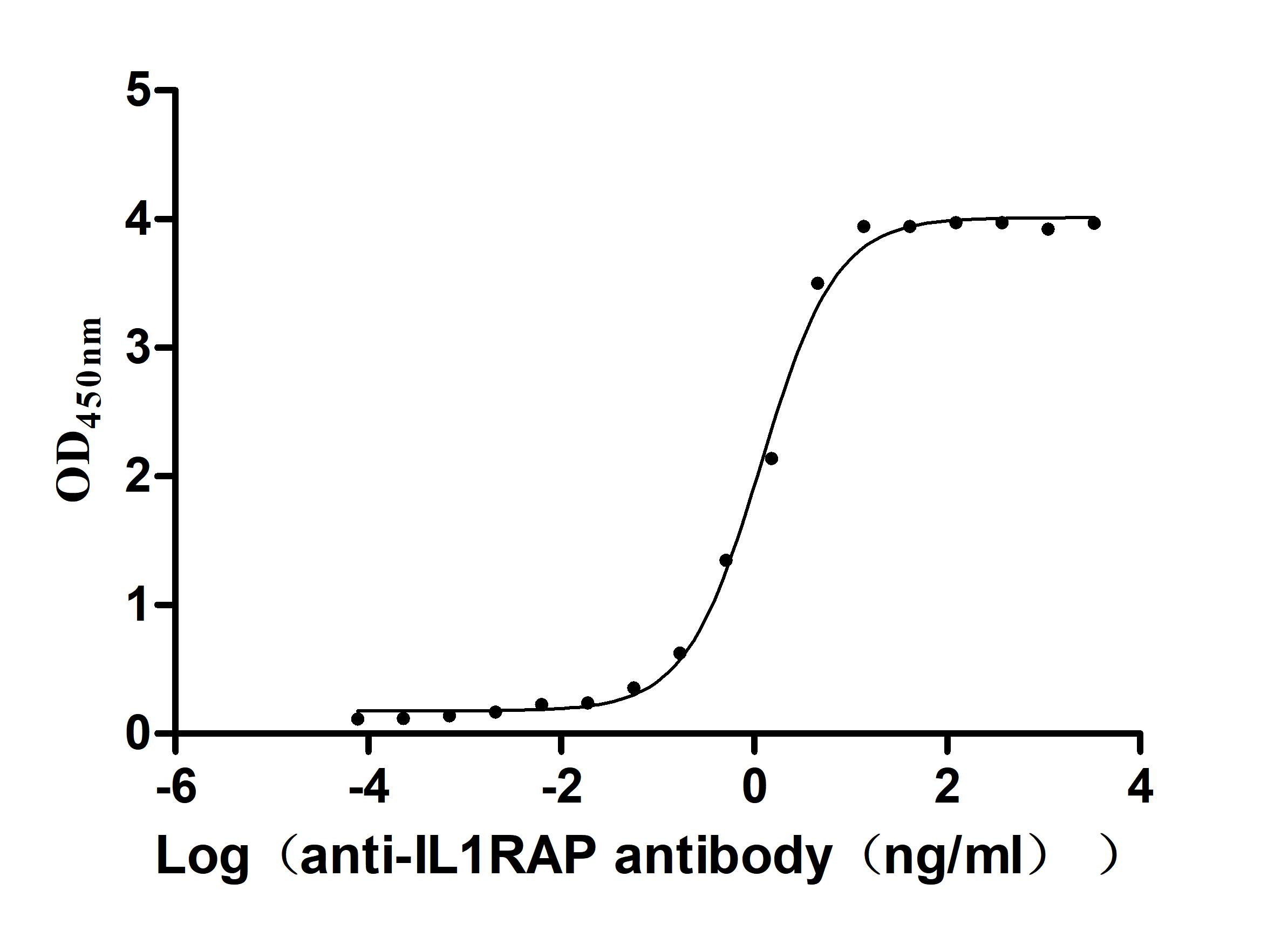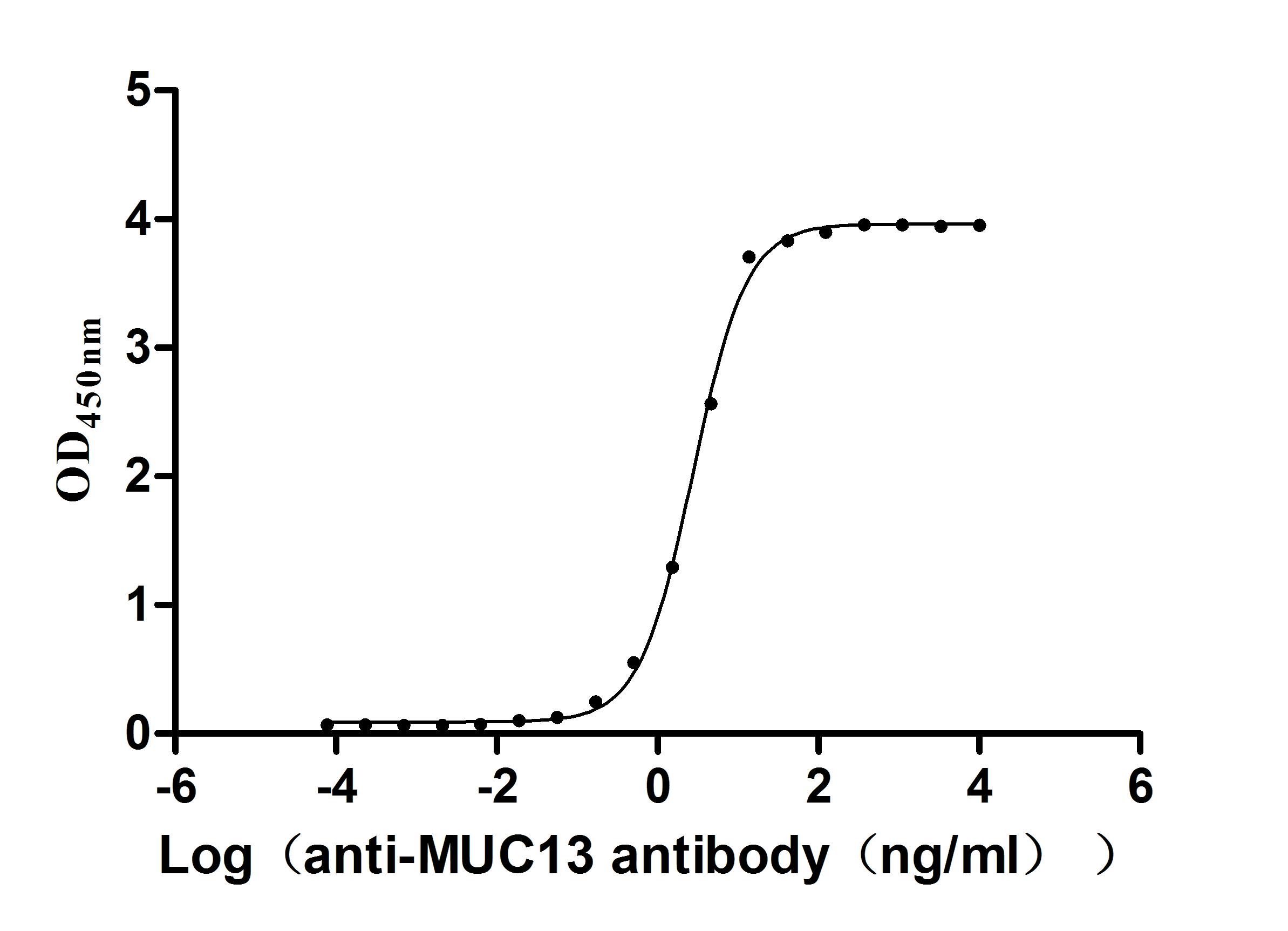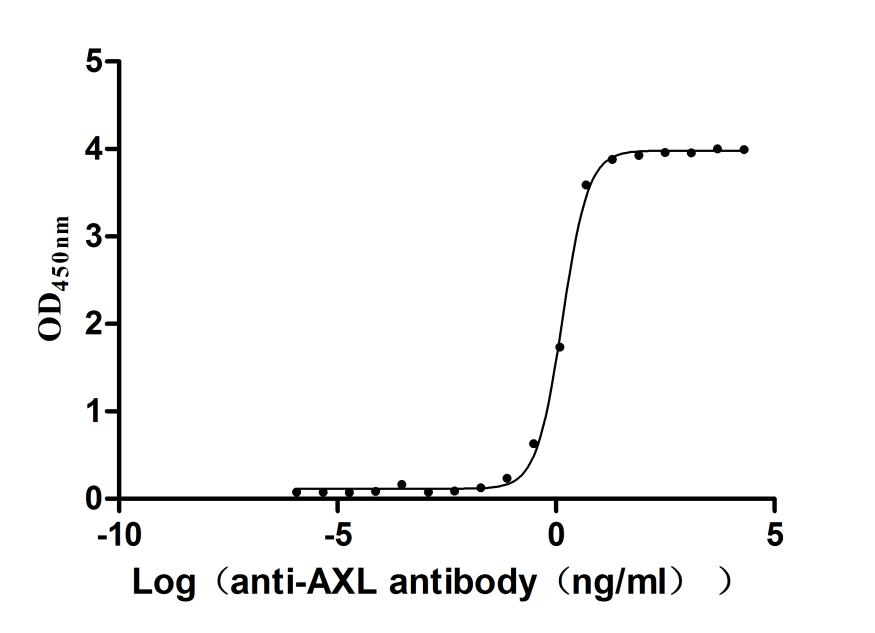Recombinant Human Glioma tumor suppressor candidate region gene 2 protein (GLTSCR2)
-
中文名稱:人NOP53重組蛋白
-
貨號:CSB-YP885778HU
-
規格:
-
來源:Yeast
-
其他:
-
中文名稱:人NOP53重組蛋白
-
貨號:CSB-EP885778HU
-
規格:
-
來源:E.coli
-
其他:
-
中文名稱:人NOP53重組蛋白
-
貨號:CSB-EP885778HU-B
-
規格:
-
來源:E.coli
-
共軛:Avi-tag Biotinylated
E. coli biotin ligase (BirA) is highly specific in covalently attaching biotin to the 15 amino acid AviTag peptide. This recombinant protein was biotinylated in vivo by AviTag-BirA technology, which method is BriA catalyzes amide linkage between the biotin and the specific lysine of the AviTag.
-
其他:
-
中文名稱:人NOP53重組蛋白
-
貨號:CSB-BP885778HU
-
規格:
-
來源:Baculovirus
-
其他:
-
中文名稱:人NOP53重組蛋白
-
貨號:CSB-MP885778HU
-
規格:
-
來源:Mammalian cell
-
其他:
產品詳情
-
純度:>85% (SDS-PAGE)
-
基因名:NOP53
-
Uniprot No.:
-
別名:Glioma tumor suppressor candidate region gene 2 protein; GLTSCR2; GSCR2_HUMAN; p60; PICT1; protein interacting with carboxyl terminus 1
-
種屬:Homo sapiens (Human)
-
蛋白長度:Full Length of Mature Protein
-
表達區域:2-478
-
氨基酸序列AAGGSGVGG KRSSKSDADS GFLGLRPTSV DPALRRRRRG PRNKKRGWRR LAQEPLGLEV DQFLEDVRLQ ERTSGGLLSE APNEKLFFVD TGSKEKGLTK KRTKVQKKSL LLKKPLRVDL ILENTSKVPA PKDVLAHQVP NAKKLRRKEQ LWEKLAKQGE LPREVRRAQA RLLNPSATRA KPGPQDTVER PFYDLWASDN PLDRPLVGQD EFFLEQTKKK GVKRPARLHT KPSQAPAVEV APAGASYNPS FEDHQTLLSA AHEVELQRQK EAEKLERQLA LPATEQAATQ ESTFQELCEG LLEESDGEGE PGQGEGPEAG DAEVCPTPAR LATTEKKTEQ QRRREKAVHR LRVQQAALRA ARLRHQELFR LRGIKAQVAL RLAELARRQR RRQARREAEA DKPRRLGRLK YQAPDIDVQL SSELTDSLRT LKPEGNILRD RFKSFQRRNM IEPRERAKFK RKYKVKLVEK RAFREIQL
-
蛋白標簽:Tag?type?will?be?determined?during?the?manufacturing?process.
The tag type will be determined during production process. If you have specified tag type, please tell us and we will develop the specified tag preferentially. -
產品提供形式:Lyophilized powder
Note: We will preferentially ship the format that we have in stock, however, if you have any special requirement for the format, please remark your requirement when placing the order, we will prepare according to your demand. -
復溶:We recommend that this vial be briefly centrifuged prior to opening to bring the contents to the bottom. Please reconstitute protein in deionized sterile water to a concentration of 0.1-1.0 mg/mL.We recommend to add 5-50% of glycerol (final concentration) and aliquot for long-term storage at -20℃/-80℃. Our default final concentration of glycerol is 50%. Customers could use it as reference.
-
儲存條件:Store at -20°C/-80°C upon receipt, aliquoting is necessary for mutiple use. Avoid repeated freeze-thaw cycles.
-
保質期:The shelf life is related to many factors, storage state, buffer ingredients, storage temperature and the stability of the protein itself.
Generally, the shelf life of liquid form is 6 months at -20°C/-80°C. The shelf life of lyophilized form is 12 months at -20°C/-80°C. -
貨期:Delivery time may differ from different purchasing way or location, please kindly consult your local distributors for specific delivery time.Note: All of our proteins are default shipped with normal blue ice packs, if you request to ship with dry ice, please communicate with us in advance and extra fees will be charged.
-
注意事項:Repeated freezing and thawing is not recommended. Store working aliquots at 4°C for up to one week.
-
Datasheet :Please contact us to get it.
相關產品
靶點詳情
-
功能:Nucleolar protein which is involved in the integration of the 5S RNP into the ribosomal large subunit during ribosome biogenesis. In ribosome biogenesis, may also play a role in rRNA transcription. Also functions as a nucleolar sensor that regulates the activation of p53/TP53 in response to ribosome biogenesis perturbation, DNA damage and other stress conditions. DNA damage or perturbation of ribosome biogenesis disrupt the interaction between NOP53 and RPL11 allowing RPL11 transport to the nucleoplasm where it can inhibit MDM2 and allow p53/TP53 activation. It may also positively regulate the function of p53/TP53 in cell cycle arrest and apoptosis through direct interaction, preventing its MDM2-dependent ubiquitin-mediated proteasomal degradation. Originally identified as a tumor suppressor, it may also play a role in cell proliferation and apoptosis by positively regulating the stability of PTEN, thereby antagonizing the PI3K-AKT/PKB signaling pathway. May also inhibit cell proliferation and increase apoptosis through its interaction with NF2. May negatively regulate NPM1 by regulating its nucleoplasmic localization, oligomerization and ubiquitin-mediated proteasomal degradation. Thereby, may prevent NPM1 interaction with MYC and negatively regulate transcription mediated by the MYC-NPM1 complex. May also regulate cellular aerobic respiration. In the cellular response to viral infection, may play a role in the attenuation of interferon-beta through the inhibition of DDX58/RIG-1.
-
基因功能參考文獻:
- Blocking cytoplasmic translocation of nucleolar protein NOP53 by deleting its nuclear export sequence abrogated its support of viral replication. Recombinant N3-T protein, containing NOP53 residues 330-432 and a human immunodeficiency virus-derived cell-penetrating Tat peptide, attenuated the expression of IFN-beta; and IFN-stimulated genes, as well as decreased the phosphorylation of interferon regulatory factor3. PMID: 29677136
- The findings of this study suggest that disruption of PICT-1 protein expression and codon 389 polymorphism can contribute to the pathogenesis or neoplastic progression of endometrial cancer. PMID: 29617699
- The study presented evidence that viral infection induced translocation of GLTSCR2 from nucleus to cytoplasm, and cytoplasmic translocation enabled GLTSCR2 to effectively attenuate IFN-beta and support viral replication; however, viral infection did not result in elevating GLTSCR2 in cells. PMID: 27824081
- PICT-1 triggers pro-death autophagy through inhibition of rRNA transcription and the inactivation of AKT/mTOR/p70S6K pathway in glioblastoma cells. PMID: 27729611
- PICT-1 is a major nucleolar sensor of the DNA damage repair response and an important upstream regulator of p53 via the RPL11-MDM2-p53 pathway. PMID: 27829214
- Codon 389 polymorphism in PICT-1 is a risk factor for uterine cervical cancers.PICT-1 counteracts HPV-induced p53 degradation. PMID: 27996172
- GLTSCR2 is a crucially involved in the positive regulation of telomerase and chromosome stability. PMID: 27357325
- The expression of GLTSCR2 was suppressed in renal cell carcinomas, accentuating the malignant phenotype. PMID: 26724143
- GLTSCR2 is crucial for normal cellular function as well as for preventing the development or progression of cancer. The JNK-c-jun axis is indispensible for regulating the activities of GLTSCR2. PMID: 26903295
- GLTSCR2 was an upstream negative regulator of the nucleophosmin (NPM)-MYC axis involved in controlling the transcriptional activity of MYC. GLTSCR2 may be a candidate for suppressing the growth of cancer cells stimulated by MYC hyperactivation. PMID: 25956029
- Data show that tumor sppressor protein GLTSCR2 down-regulates total nucleophosmin (NPM) expression levels by decreasing its protein stability. PMID: 25818168
- We demonstrated the GLTSCR2 expression decreased with the rise of the grade of cervical lesions; GLTSCR2 may play an important role in carcinogenesis of cervical cancer PMID: 25118835
- These results suggest that PICT1 employs atypical proteasome-mediated degradation machinery to sense nucleolar stress within the nucleolus. PMID: 24923447
- High PICT1 expression is associated with hepatocellular carcinoma. PMID: 23532381
- GLTSCR2 is down-regulated in squamous cell carcinomas of the skin and UV light exposure decreases the stability of GLTSCR2 and sensitizes keratinocytes to DNA damage. PMID: 23942755
- Authors confirmed the interaction of PICT-1 with itself by direct yeast two-hybrid assay and also showed self-association of PICT-1 in mammalian cells by co-immunoprecipitation and fluorescence resonance energy transfer assays. PMID: 24735870
- GLTCR2 may play a role in the tumorigenesis, progression and biological behavior in breast cancer. PMID: 24054033
- GLTSCR2 controls cellular proliferation and metabolism via the transcription factor Myc, and is induced by mitochondrial stress, suggesting it may constitute a significant component of the mitochondrial signaling pathway. PMID: 24556985
- Findings suggest that PICT1 has a crucial role in gastric cancer progression by regulating the MDM2-TP53 pathway through RPL11. PMID: 24045667
- GLTSCR2 functions as a tumor suppressor in prostatic adenocarcinomas. PMID: 23920125
- The glioma tumor-suppressor candidate region gene 2 (GLTSCR2)is as a new member of the nucleolus-nucleoplasmic axis for p53 regulation. PMID: 22522597
- Repeated hypoxia downregulates p53-upstream regulator, GLTSCR2, which resulted in increased death resistance and invasive potential of glioblastoma cells. Restoration of GLTSCR2 expression suppressed the malignant potential of hypoxia-selected cells. PMID: 22850112
- PICT-1 exhibits a nucleolar distribution similar to proteins involved in ribosomal RNA processing, yet does not colocalize precisely with either UBF1 or Fibrillarin under normal or stressed conditions. PMID: 22292050
- GLTSCR2 seems to act as a tumor suppressor by participating in optimal DNA damage response because DNA damage is a frequent and crucial event in oncogenesis. PMID: 21741933
- PICT1 is a potent regulator of the MDM2-P53 pathway and promotes tumor progression by retaining RPL11 in the nucleolus. PMID: 21804542
- merlin mediates PICT-1-induced growth inhibition by translocating to the nucleolus and binding PICT-1 PMID: 21167305
- Our results show a down-regulation of GLTSCR2 in seborrheic keratosis, indicating that GLTSCR2 may have a protective effect on the development of SK. PMID: 20185249
- study describes a novel interaction between KS-Bcl-2 & PICT-1 cellular protein, encoded by a candidate tumor suppressor gene, GLTSCR2; show this interaction specifically targets KS-Bcl-2 to the nucleolus & decreases its antiapoptotic activity PMID: 20042497
- These results suggest that PICT-1 plays a role in phosphatidylinositol 3,4,5-trisphosphate signals through controlling PTEN protein stability. PMID: 16971513
- results suggest that the induction of PTEN-modulated apoptosis is one of the putative mechanisms of tumor suppressive activity by GLTSCR2 PMID: 17657248
- GLTSCR2 as a proapoptotic protein sensitizing cells to hypoxic injury when overexpressed PMID: 17890897
- GLTSCR2 expression is down-regulated in glioblastomas. Direct sequencing analysis and fluorescence in situ hybridization clearly demonstrates the presence of genetic alterations, such as a nonsense mutation and deletion, in the GLTSCR2 gene. PMID: 18729076
顯示更多
收起更多
-
亞細胞定位:Nucleus, nucleolus. Nucleus, nucleoplasm.
-
蛋白家族:NOP53 family
-
組織特異性:Expressed at high levels in heart and pancreas, moderate levels in placenta, liver, skeletal muscle, and kidney, and low levels in brain and lung.
-
數據庫鏈接:
Most popular with customers
-
Recombinant Macaca fascicularis Angiotensin-converting enzyme (ACE2), partial (Active)
Express system: Mammalian cell
Species: Macaca fascicularis (Crab-eating macaque) (Cynomolgus monkey)
-
Recombinant Human CD226 antigen (CD226), partial (Active)
Express system: Mammalian cell
Species: Homo sapiens (Human)
-
Recombinant Human Carcinoembryonic antigen-related cell adhesion molecule 6 (CEACAM6) (Active)
Express system: Mammalian cell
Species: Homo sapiens (Human)
-
Recombinant Macaca fascicularis lymphocyte antigen 6 family member G6D (LY6G6D) (Active)
Express system: Yeast
Species: Macaca fascicularis (Crab-eating macaque) (Cynomolgus monkey)
-
Recombinant Mouse Cell adhesion molecule 1 (Cadm1), partial (Active)
Express system: Mammalian cell
Species: Mus musculus (Mouse)
-
Recombinant Human Interleukin-1 receptor accessory protein (IL1RAP), partial (Active)
Express system: Mammalian cell
Species: Homo sapiens (Human)
-
Recombinant Human Mucin-13(MUC13),partial (Active)
Express system: yeast
Species: Homo sapiens (Human)
-
Recombinant Human Tyrosine-protein kinase receptor UFO(AXL),partial (Active)
Express system: Mammalian cell
Species: Homo sapiens (Human)


